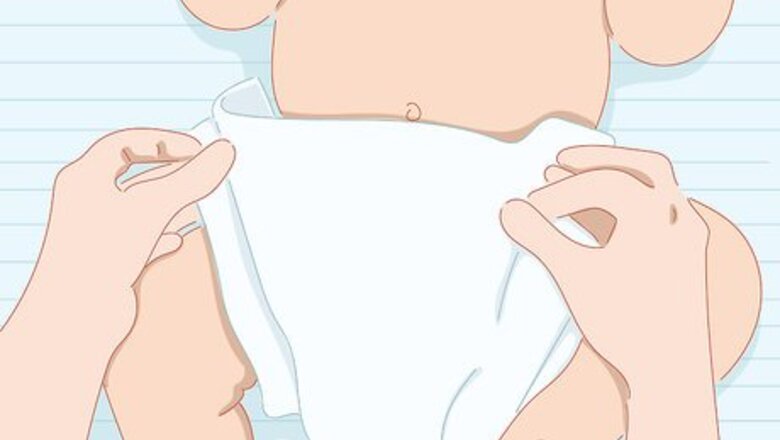
views
Addressing Your Baby’s Basic Needs
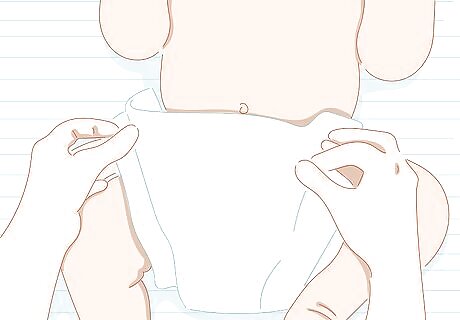
Change your baby's diaper if it is dirty. Look for signs such as crying, odor, wetness, or constant movement and check your baby’s diaper. If it is wet or soiled, take off the old one and use baby wipes to clean the baby's genitals and legs. Allow the area to dry completely, then apply a soothing ointment and put on a new diaper. Check your baby’s diaper at least every 2 to 3 hours to help prevent diaper rash and keep your baby comfortable. Always wash your hands before and after you change your baby’s diaper. Change diapers in a warm, clean location, such as on a clean towel on your living room floor or on a changing table in the baby’s nursery.

Feed your baby if they seem hungry. Breastfeed or bottle-feed your baby pumped breast milk or formula. If your baby has progressed to solid foods, then you can also offer them some cereal or baby food. Some signs that your baby might be hungry include: Smacking their lips Crying Rooting (baby turning their head toward you when you touch their cheek) Putting their hands in their mouth
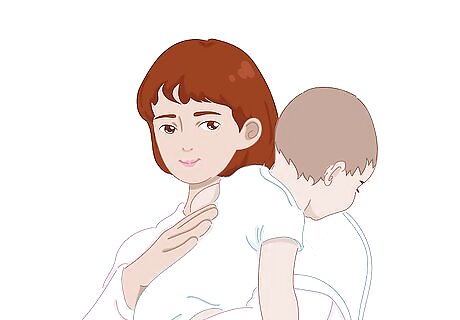
Pat your baby on their back to burp them after a feeding. After they are done eating, they may start to cry because of a gas build-up in their stomach. The best way to burp your baby is to lean your baby's stomach over your shoulder. One hand should be on the baby's bottom while the other is supporting the baby’s head and neck. Gently pat your baby on the back as you hold them in this position until your baby burps. Keep your baby upright so that they can release the gas build-up.
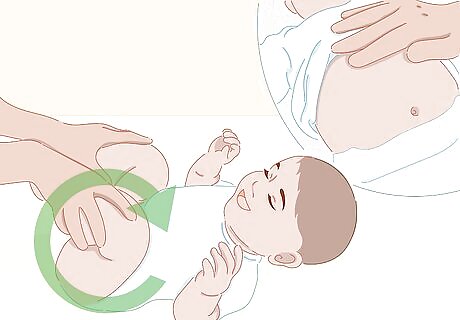
Bicycle your baby’s legs to help relieve built-up gas. If your baby is still crying after you try to burp them, then they might need more help to release built-up gas. Lay your baby on their back on top of a soft blanket. Gently grab each of their lower legs and begin to bicycle them (this is the same motion as you would pedal a bicycle). Keep doing this until you either hear your baby relieve themself or they stop crying. You can also contact your doctor about using infant gas drops which help your baby pass gas. Make sure to consult your doctor about constant gas problems. This could be related to acid reflux, lactose intolerance, constipation, the stomach flu, etc.
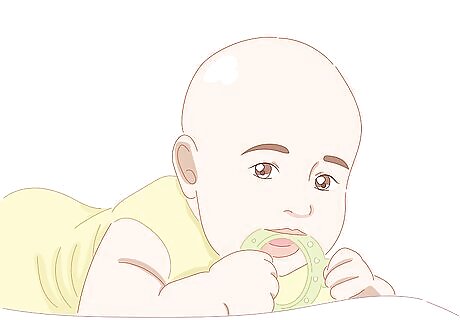
Offer a pacifier if your baby is not responding to other strategies. Babies, especially up to 7 months old, have strong sucking needs. If your baby is crying after changing, feeding, and burping them, then they might simply want something to suck on. Try giving your baby a pacifier or help them find their thumb and see if this helps to soothe them. Giving your baby a pacifier might also help them to fall asleep.
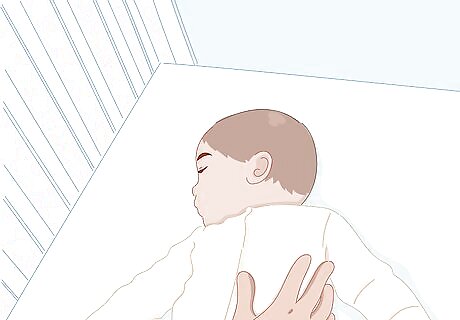
Take your baby to their crib if they seem sleepy. Sometimes the best solution is the easiest. A baby will often cry a lot if they need to go to sleep. They may also yawn, be a tad cranky, or simply be falling asleep. Hold them in your arms for a while before you take them to their crib. After they are calm, lay them down in their crib on their back. Don’t put any blankets, pillows, stuffed animals, or other items in the crib with your baby. These increase the risk of SIDS. A musical mobile hanging above the bed, playing a song, can help lull them to sleep. Always keep a baby monitor on if you plan on going out of the room. Tip: Talk to your doctor if your baby cries incessantly for 3 or 4 hours at a time, 3 or more days of the week, over a period of 3 or more weeks. This is a sign of colic, and your baby’s pediatrician may be able to help you with strategies for soothing your baby.
Calming and Soothing Your Baby
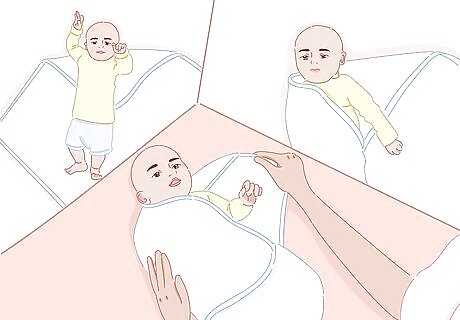
Swaddle your baby to provide a warm, snug, and secure feeling. The key is to wrap your baby tightly, without over-wrapping. Start by grabbing a small blanket, and lay it so it looks like a diamond. Then take the top corner and fold it all the way down to the other corner. This should create what looks like an upside-down triangle. Center your baby in the middle of the blanket and pull their arms inward. Take the left corner and pull it all the way across the baby. Tuck it underneath their back on the other side. Take the right corner and pull it all the way to the left. Tuck that underneath their back as well. Finish the fold by tucking the bottom of the blanket underneath the baby. Keep the top open so the baby's head is fully exposed. You can also pull back some of the blanket at any time you think it is too tight.
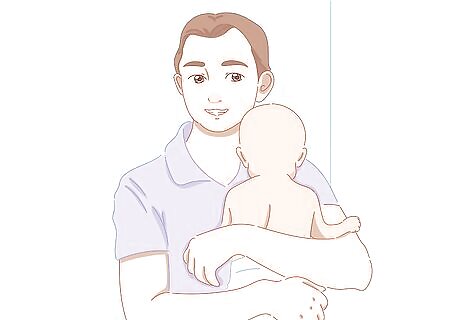
Cuddle with your baby to make them feel secure. Babies, especially during the first few months, need lots of care and affection. Hold your baby in your dominant arm and secure them with your other arm. Rest your baby's head in the crook of your elbow. Sway, bounce, or walk as you hold your baby. Make sure that your baby is resting against your body, as they may like to hear your heartbeat and see your face. Tip: Try using a baby sling or carrier to keep your baby close and have your hands free. Make sure to follow the instructions carefully to ensure that your baby is secure.
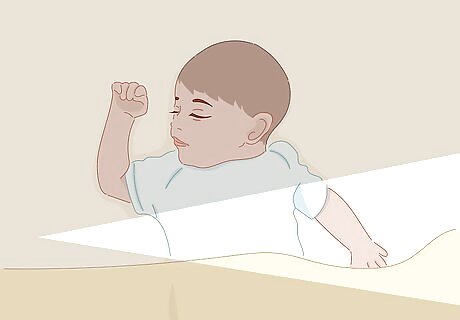
Adjust the noise level in your home. While some babies like noises, some like it to be quiet and dark. Dim the lights in your house so that they do not bother the baby's eyes. Turn off the television, the vacuum cleaner, hair dryer, etc. If this doesn’t work, turn on a fan, play soothing music, or play rain sounds, ocean waves crashing, or similar water sounds. You might also want to check the internal temperature of the house. If it is too hot, or too cold, that can bother the baby's nerves.
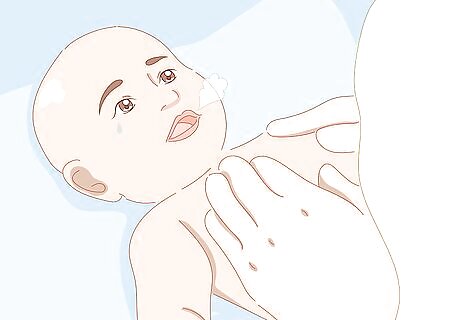
Give your baby a massage. The warm touch of your hands can console your baby almost instantly, especially when they are feeling muscle or joint pain (commonly referred to as "growing pains"). You will want to lay your baby in a comfortable position, like on the couch or the bed. Take your baby's clothes off except for their diaper. Use baby oil or lotion to conduct the massage. You will want to work in soft, gentle motions. If your baby cries more when you begin to give the massage, don’t continue the massage. Try something else. Make sure to work the face, arms, legs, back, and stomach. Use slow circular motions as well as hand-over-hand motions. Use thumb-over-thumb motions to massage your baby's hands and feet. Separate and massage each finger and toe.
Entertaining Your Baby
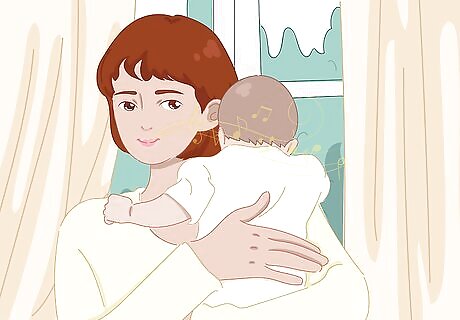
Sing to your baby to distract them. If your baby is crying and having trouble sleeping, sometimes the easiest remedies are the best. Sing a lullaby to your baby, or just hum as you watch your baby. They will focus on the notes and your face, and finally relax. As you are singing to them, you can either lay them in their crib, or hold and rock them in your arms. It does not matter what you sing to your baby! Sing a nursery rhyme or a popular song that you know well. Your baby will just like hearing the sound of your voice.
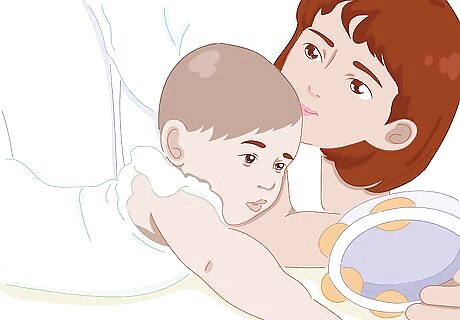
Play a game with your baby. Put your hands over your eyes, pull them away, and say "peek-a-boo!" Make funny faces at your baby by scrunching your face, and wait for them to laugh. Place them on the carpet and crawl around on the floor with them. Place your hand in front of them face and wait for them to touch your hand with theirs. You can also try talking to your baby in a silly voice. Put your face close to their face and talk to them.
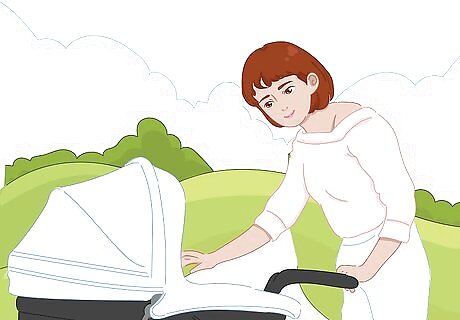
Take your baby outside in a stroller or baby carrier. Secure your baby in a stroller or place your baby in a sling around your shoulder. Your baby will enjoy seeing new things, and breathing fresh air. Always bring a bottle, pacifier, diaper, etc. with you when you leave. Go walk with your baby for about 30 minutes to 1 hour. The movement of the stroller may also calm your baby down. Make sure not to go anywhere too rugged.

Visit a friend or family member with your baby. Taking your baby to a trusted friend or family member’s house may be a good change of pace for both of you. Breathing fresh air, going on a car ride, and traveling to new places can also excite your baby's senses and make them forget about crying. Safety Precaution: Make sure if you take your baby in a car that you are using adequate safety measures, such as placing your baby in the back seat buckled into a rear-facing car seat.

















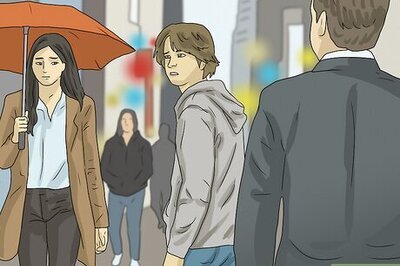
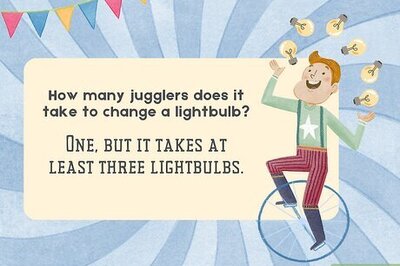
Comments
0 comment